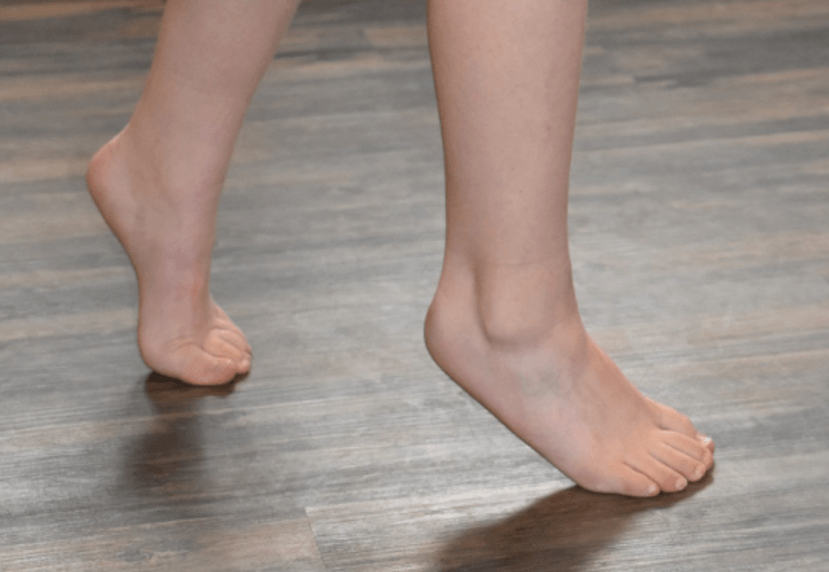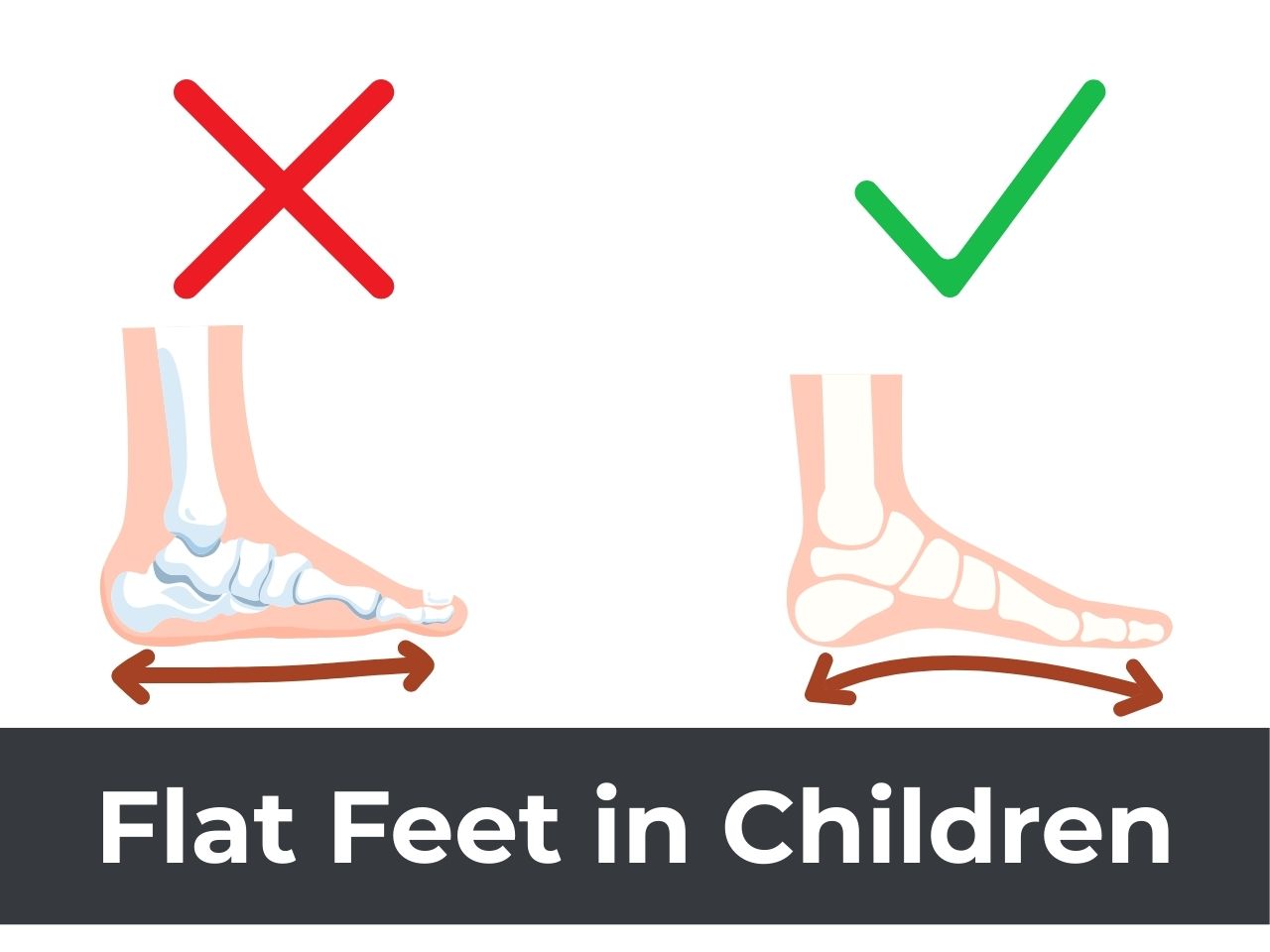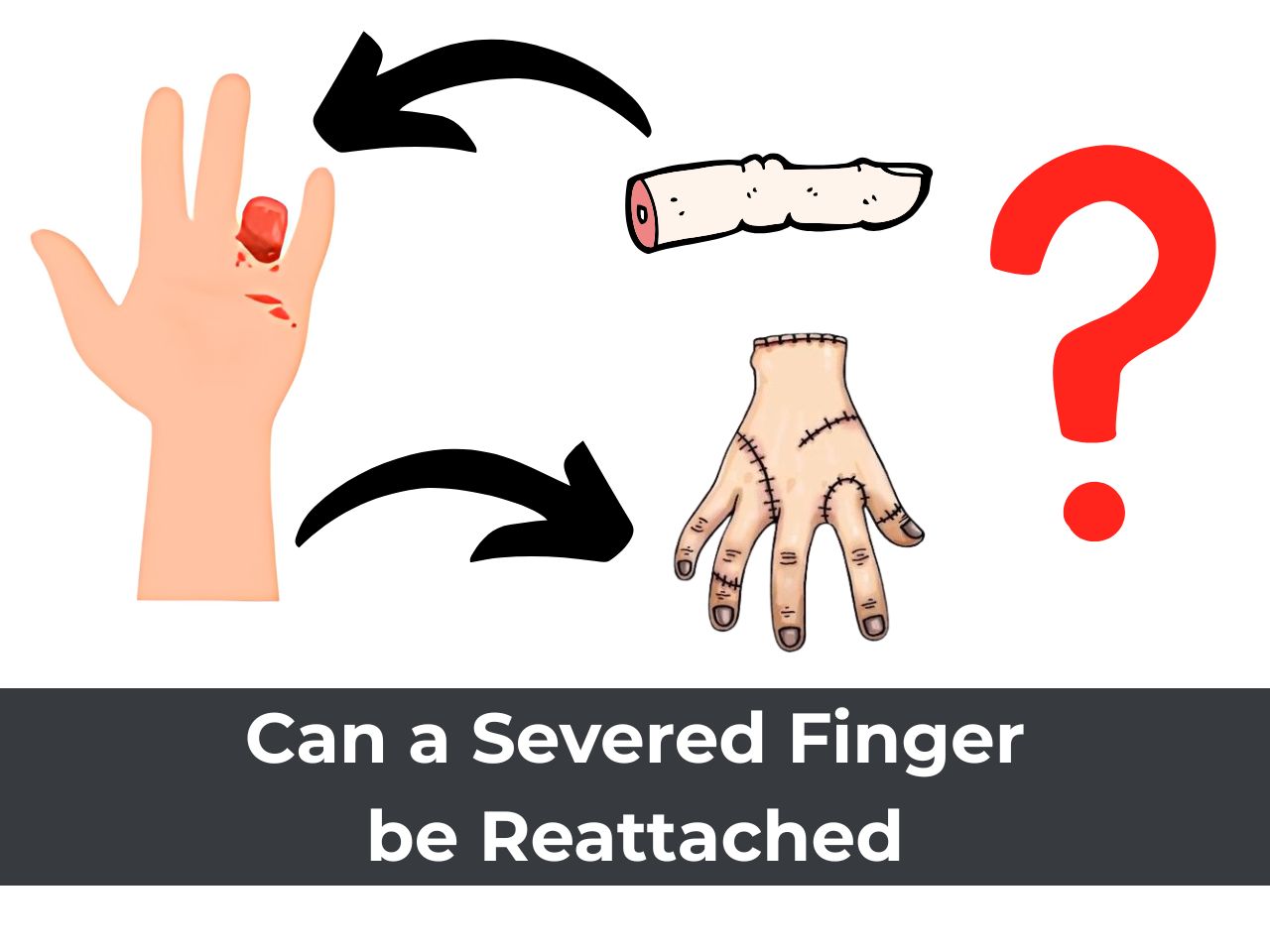Introduction:
Toe-walking is a condition in which children walk on tiptoes.
The ankles are in equinus and initial contact of the foot is on the forefoot (Figure 1). When a child toe walks without an apparent underlying cause, the condition is called Idiopathic Toe Walking.
Idiopathic Toe Walking is a diagnosis of exclusion and is made after carefully ruling out pathological causes of Toe Walking such as Cerebral Palsy, Duchenne Muscular Dystrophy and Autism Spectrum Disorder. The incidence of Idiopathic Toe Walking is 5%.

Figure 1: Toe Walking
Should you label every toddler who toe-walks as an “Idiopathic Toe Walker (ITW)”?
Before achieving independent walking, every toddler passes through 3 stages:
- Stage 1 (Toddler stage): Stilted leg shuffling
- Stage 2: Cruise around furniture
- Stage 3 (Heel Toe Gait): Initial heel strike, mid-foot contact, Toe-off
Many toddlers normally toe-walk in Stages 1 and 2. This is considered a normal variant intermediate stage in motor development for healthy children .
This physiologic toe walking should disappear by the age of 18 to 24 months (Sala 1999, Fox 2006).
Persistence of toe-walking beyond the age of 18 to 24 months is abnormal and termed “IDIOPATHIC TOE WALKING”.
What are the causes of Idiopathic Toe Walking (ITW)?
Theories proposed for the causation of Idiopathic Toe Walking include:
- Genetic.
- Increase in Type 1 muscle fibres.
- Sensory Integration Deficit (maybe seen in association with Autism Spectrum Disorder).
- Early use of infant walkers.
What is the clinical presentation of Idiopathic Toe Walking?
- Parents are concerned about the cosmetic appearance/ societal concerns associated with ITW.
- Occassionally, children may present with frequent tripping/ falls.
- On clinical examination, children with ITW may have tight heel cords (Tendo-Achilles) with restricted ankle dorsiflexion.
However, as can be seen later in this article, restricted ankle dorsiflexion is not the rule in every case.
What is the natural history of Idiopathic Toe Walking?
1-It has been observed that children with Idiopathic Toe Walking may have one of two distinctly different natural histories.
2-In children without tight heels cords (with no restriction of ankle dorsiflexion), spontaneous resolution of toe walking is seen in 80% children by the age of 10 years. These children usually do not experience significant functional disturbances/ pain/ deformities (Engstrom 2018, Hirsch 2004, Taussig 2011, Stricker 2008).
3-On the other hand, in children with tight heel cords (restricted ankle dorsiflexion), pain/ frequent falls/ psychological consequences are common. Early intervention is warranted in this group of children.
What is the treatment of Idiopathic Toe Walking?
Treatment of Idiopathic Toe Walking depends on the age of the child and extent of heel cord tightness. For younger children with no heel cord tightness, conservative treatment has a good success rate.
On the other hand, older children with TA tightness may require surgical treatment for lengthening the tight heel cords.
Options for conservative treatment of Idiopathic Toe Walking include:
1-Therapy:
- Muscle stretching exercises (Stricker 2008)
- Motor control intervention (Clark 2010)
- Auditory feedback (Conrad 1980)
2-Orthoses:
- Ankle foot orthoses (Caselli 2002, Herrin 2016, Sala 1999, Stricker 1998)
3-Orthopaedic:
- Serial stretch cast (Bilateral below knee cast with neutral ankle x 4 weeks) (Engstrom 2013).
- Botulinum Toxin Type A + Stretch Cast (12 Units/kg, 4 injection points: Proximal medial Gastroc, Proximal lateral gastroc, distal medial gastrocsoleus, distal lateral gastrocsoleus.
Options for surgical treatment of Idiopathic Toe Walking should be considered if conservative measures are unsuccessful.
Surgical options described include:
- Per-cutaneous Tendo-Achilles lengthening.
- Open Tendo-Achilles lengthening.
- Vulpius gastrocnemius intramuscular recession.
What treatment protocol is followed at Pinnacle Orthocentre Hospital for treatment of Idiopathic Toe Walking?
At Pinnacle Orthocentre Hospital, every child who presents with toe-walking is evaluated for presence of any associated neurological disorder like Cerebral Palsy, Duchenne Muscular Dystrophy or Autism Spectrum Disorder.
This is done by careful clinical evaluation. In certain, additional Paedictric Neurological consultation and investigations like MRI brain/ spine, EMG/NCV studies both lower limbs and Serum Creatine Phosphokinase levels may be obtained.
Once the diagnosis of Idiopathic Toe Walking is established, we refer the child for Physiotherapy. Ankle Foot Orthoses (AFOs) may be prescribed.
Children with persistent toe-walking despite an adequate trial of Physiotherapy and AFOs usually undergo Injection Botulinum Toxin in the calf muscle and stretch casts.
Surgical option is reserved for children who have persistent toe-walking after the above measures or children with established gastrocsoleus contractures.
Therapy:
- Muscle stretching exercises (Stricker 2008)
- Motor control intervention (Clark 2010)
- Sensory Integration Therapy
- Auditory feedback (Conrad 1980)
Orthoses:
- Ankle foot orthoses (Caselli 2002, Herrin 2016, Sala 1999, Stricker 1998)
Orthopaedic:
- Serial stretch cast (Bilateral below knee cast with neutral ankle x 4 weeks) (Engstrom 2013).
- Botulinum Toxin Type A + Stretch Cast (12 Units/kg, 4 injection points: Proximal medial Gastroc, Proximal lateral gastroc, distal medial gastrocsoleus, distal lateral gastrocsoleus.
Options for surgical treatment of Idiopathic Toe Walking should be considered if conservative measures are unsuccessful.
Surgical options described include:
- Per-cutaneous Tendo-Achilles lengthening.
- Open Tendo-Achilles lengthening.
- Vulpius gastrocnemius intramuscular recession.
What are the treatment outcomes of Idiopathic Toe Walking?
Children with Idiopathic Toe Walking are fully cured after appropriate treatment. Early treatment helps to avoid more aggressive treatment like surgery. Children with Idiopathic Toe Walking can participate in sports and have no functional limitations after appropriate treatment.
_ By Dr Sandeep Vaidya, Paedictric Orthopaedic Surgeon, Pinnacle Orthocentre Hospital. For more information, mail drsvvaidya@gmail.com & Call 7028859555.






0 Comments